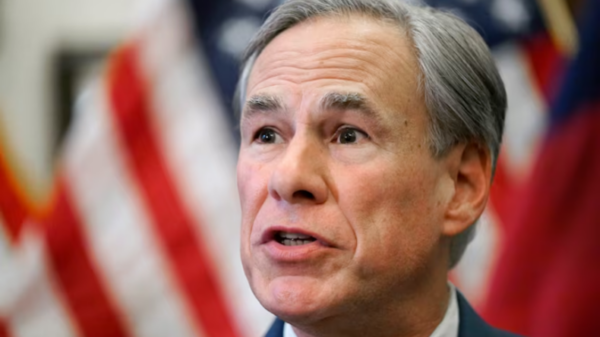By Marin Wolf

The shoulder pain and dizziness started before the pandemic, but Shane Hardin, 46, didn’t think much of it.
Aches and pains come with the territory of getting older, and Hardin’s job in residential construction can be draining. The spread of COVID-19 across North Texas dissuaded him further from seeing his general practitioner for a checkup.
For more than two years, patients like Hardin pushed off routine health care visits as offices closed to nonemergency cases and the threat of coronavirus loomed. It could take years before the health care system sees the full effects — both physical and financial — of delayed care, North Texas doctors say.
When Hardin sat in a new doctor’s office in September after more than a year since his last physical, he was shocked at the stern warning: He needed to see a cardiologist, and fast.
The doctor “was a little incredulous that I had not been referred to a cardiologist earlier,” Hardin said. His family’s history of heart disease was worrying enough to warrant an immediate trip to a specialist.

Six weeks later, Hardin was in an operating room for quintuple bypass surgery.
Hardin will never know if his heart condition would have been caught at a checkup he missed in 2020 or early 2021. But his story fits an alarming trend of medical problems caught in later, more severe stages because of interrupted preventive care.
“We’re now starting to see patients coming through, with a higher proportion of patients who have a more advanced stage of cancer diagnosis,” said Dr. John Sweetenham, associate director for clinical affairs at UT Southwestern’s Harold C. Simmons Comprehensive Cancer Center.
Routine procedures done to catch cancer and other serious illnesses early in their progression were not front of mind for patients navigating the pandemic. For example, Simmons Comprehensive Cancer Center saw a nearly 20% decline in the number of people coming to the center for mammograms, Sweetenham said.
One study of more than 358,000 patients in Ontario, Canada, published in the Journal of the National Comprehensive Cancer Network, found an immediate decline in the average cancer rate at the start of the pandemic — but that’s not necessarily a good thing. The researchers estimated the presence of 12,601 cancer cases that went undetected from March 15 to Sept. 26, 2020, in the Ontario area.
Time is critical in the treatment of serious illnesses. Ignoring symptoms or routine preventive visits can limit the treatment options as a disease progresses. “The best opportunity to cure any cancer is when it’s at a very early stage,” Sweetenham said. “Each time that the stage increases, you, to some extent, lose that opportunity for care.”
The financial burden
Though most doctors’ offices reopened to nonemergency visits after the first few months of the coronavirus, some are just starting to catch up to pre-pandemic schedules.
Texas Health Resources obstetrician and gynecologist Dr. Sheila Chhutani said her practice first rescheduled pap smear appointments by six to eight weeks in 2020, which snowballed into interruptions for months afterward.
Pandemic-related financial difficulties also got patients off their regular health care schedules. Some of Chhutani’s patients lost their jobs or were furloughed, leading to financial discomfort and, sometimes, the loss of insurance.
With more advanced disease come higher costs for both patients and health care systems. A 2016 study of breast cancer patients published in American Health & Drug Benefits found that, on average, insurance companies allowed costs per patient of around $82,000 in the first year of treatment for patients with stage I/II tumors, compared to nearly $135,000 for patients with stage IV tumors.
In Texas, which has the highest rate of people without insurance of any state, higher costs leave patients vulnerable to life-altering bills. Even for patients with insurance, Sweetenham said, co-pays can cause serious financial burden.
A January study by The Commonwealth Fund, which supports independent health care issue research, found that Texans in 2020 spent more than 14% of the state’s median income – around $9,300 – on premium contributions and deductibles.
Mental and physical barriers
In addition to putting off preventive screenings, doctors like Sweetenham noticed patients at the beginning of the pandemic were less likely to come in for common illnesses. Mental and physical roadblocks kept some at home.
Nicholas Saunders, 24, said before the pandemic, he’d go to the doctor around three to four times a year for checkups and sick visits. Fear of COVID-19 exposure made him hesitant to see his primary care provider.
During the months of lockdown, “I had regular illnesses, like the flu and stomach bug,” the Collin College student said. “I might have gone in for treatment had it not been during a pandemic, but I chose not to and tried to self-treat at home.”
Down in Austin, Robin Orlowski, 43, didn’t have the choice of whether to visit her neurologist. Her epilepsy is controlled by medication that requires regular dosing adjustments depending on her weight, which can’t be measured during a telehealth visit.

While she was nervous about being exposed to the coronavirus at her doctor’s office, her biggest hurdle was finding a way there. Orlowski’s local bus route reduced its frequency, leaving her with limited options.
“I have people who can drive me, and normally, outside of a pandemic, you can depend on them,” she said. “But they live in other houses and since in a pandemic you have to be isolated from others, they couldn’t come and get me when the bus wasn’t reliably running.”
Most Texas cities and towns have returned to pre-pandemic operations, making it easier for people like Orlowski to make it to their appointments. The implementation of vaccines and currently low COVID-19 case counts eased the minds of people like Saunders, who made a mad dash in the last few weeks to catch up on appointments he missed.
For those who haven’t yet seen their physicians and dentists, it isn’t too late to get back on a regular health care schedule, Sweetenham said. The sooner patients get back into their routine check-ups, the better.
“If you have delayed a screening, or if you have put off having a symptom or a sign checked out, now is a good time to return and get that screening test done,” he said.









You must be logged in to post a comment Login